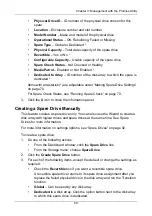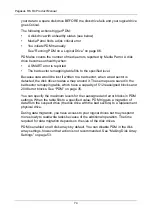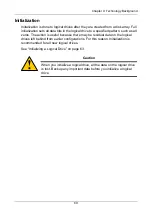
Chapter 4: Technology Background
75
Logical Drives
Logical drive technology includes:
•
•
RAID Level Migration (page 84)
•
•
•
RAID Levels
RAID (Redundant Array of Independent Disks) allows multiple physical drives to
be combined together in a disk array. Then all or a portion of the disk array is
formed into a logical drive. The operating system sees the logical drive as a
single storage device, and treats it as such.
RAID 0 – Stripe
When a logical drive is striped, the read and write blocks of data are interleaved
between the sectors of multiple physical drives. Performance is increased, since
the workload is balanced between drives or “members” that form the logical drive.
Identical drives are recommended for performance as well as data storage
efficiency.
Figure 1. RAID 0 Striping interleaves data across multiple drives
The disk array’s data capacity is equal to the number of disk drive members
multiplied by the smallest drive’s capacity. For example, one 100 GB and three
120 GB drives form a 400 GB (4 x 100 GB) disk array instead of 460 GB.
If physical drives of different capacities are used, there is unused capacity on the
larger drives.
RAID 0 logical drives on Pegasus consist of one or more physical drives.
Data
Stripe
Physical Drives















































